Workers restoring St. Andreas Church in Eisleben uncovered a hoard of 816 coins hidden away in a statue's leg during the Thirty Years' War.
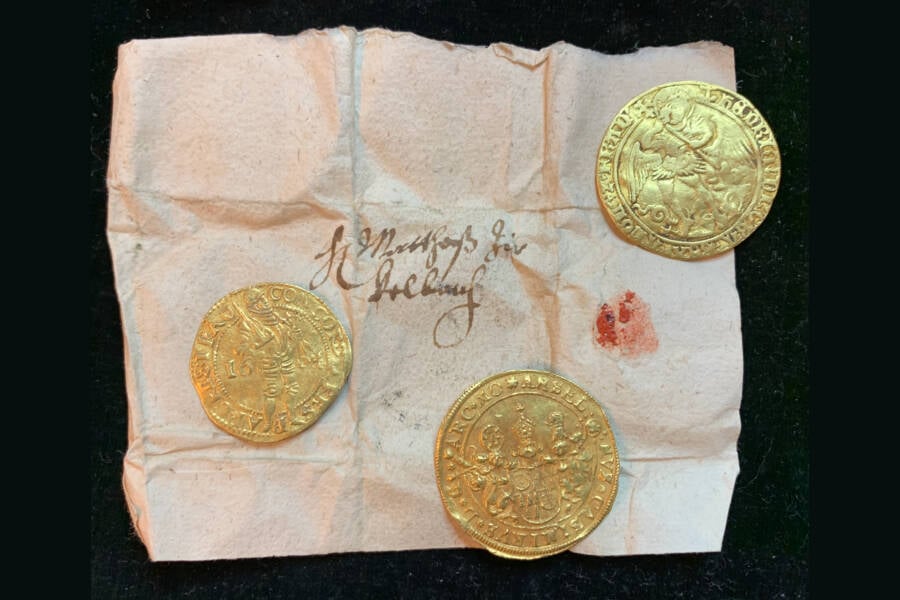
U. Dräger, HalleSome of the coins found in the leg of a statue at St. Andreas Church in Eisleben, Germany.
Restoration workers at St. Andreas Church in Eisleben, Germany have uncovered a surprising find 400 years in the making. Inside the leg of a statue, they found four bags stuffed with coins dating back to the 1600s, likely hidden away during the Thirty Years’ War when Swedish soldiers were plundering the region.
In all, this treasure trove contains 816 coins, and though they were discovered in 2022, the announcement was only made recently, once detailed examinations and documentation were completed.
The Discovery Of 816 Coins Hidden In A Statue’s Leg At St. Andreas Church
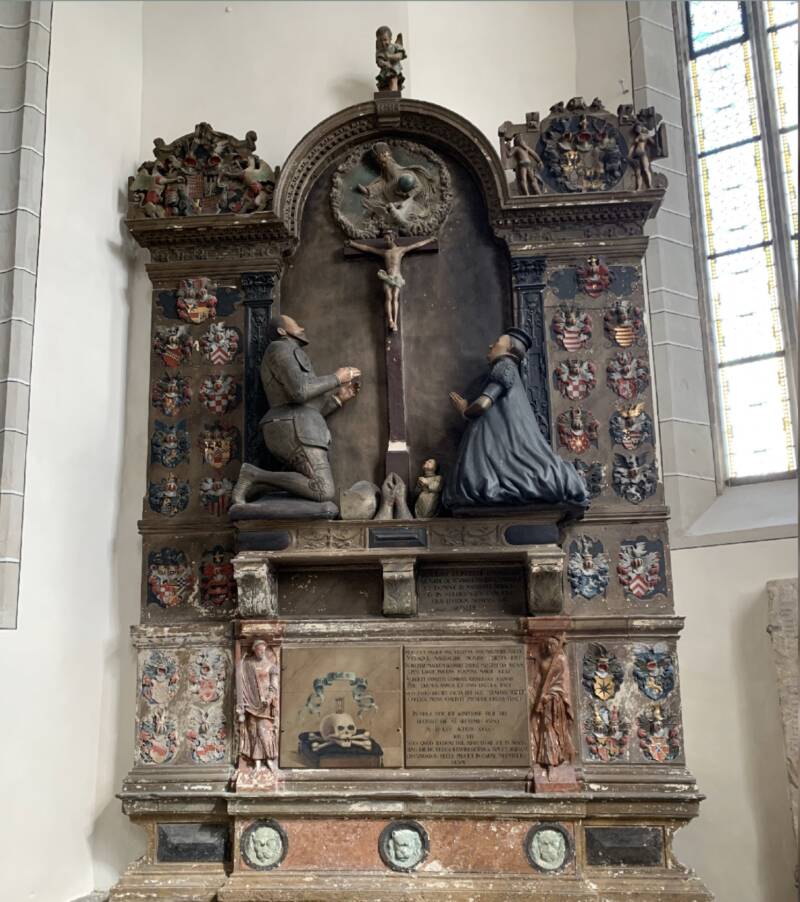
U. Dräger, HalleThe sandstone statue in St. Andreas Church, in which the bags of coins were found.
Workers were restoring a sandstone statue inside the famous Gothic church when they came across the coin bags, hidden away within a cavity of the statue’s leg. All together, there were four bags, containing a total of 816 coins. Among them were a rare “golden angel” gold coin, gold ducats, various silver coins, and hundreds of pennies.
“This is an incredible story,” Ulf Dräger, curator of the State Coin Cabinet of Saxony-Anhalt told Live Science.
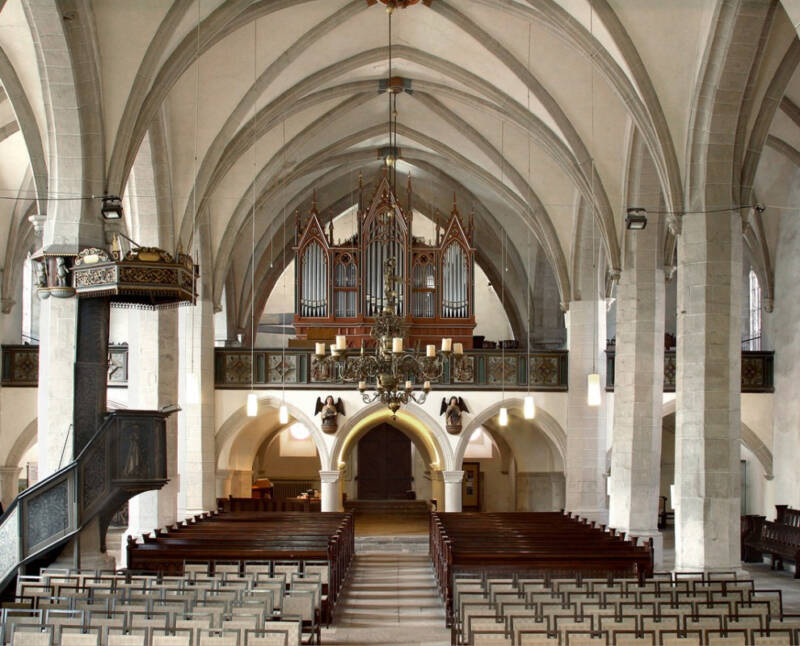
Kirchenkreis Eisleben/Sarah SmithThe interior of St. Andreas Church in Eisleben, Germany.
What’s more, this is the very same church where the Protestant Reformer Martin Luther preached and initially wrote his “Ninety-Five Theses” detailing the corruption of the Roman Catholic Church in 1517. Luther even delivered his last sermons there in 1546, but that hardly marked the last time that this church left a mark on history.
Roughly 100 years later, around 1640, someone hid four “bulging purses” of coins in the cavity of a leg of a sandstone statue — and they remained hidden for nearly 400 years, only coming to light once again in November 2024.
“It is nothing short of a miracle that the treasure did not come to light sooner,” Dräger said. The hoard’s exact value is still unknown and awaiting evaluation by a coin expert, but Dräger added, “at the moment, I can only say that it is a huge fortune. Much more than a craftsman could earn in a year.”
Experts believe the treasure was hidden during the Thirty Years’ War, likely to keep it hidden away from Swedish soldiers who were plundering the region.
The Devastating Impact Of The Thirty Years’ War In Eisleben, Germany
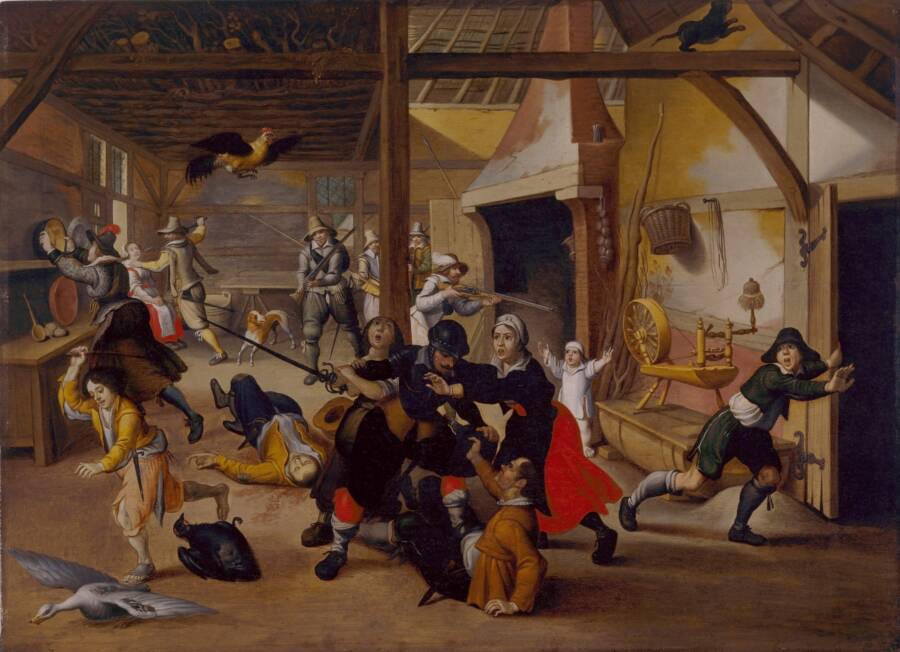
Sebastian VrancxSoldiers plundering a farm during the Thirty Years’ War.
The Thirty Years’ War (1618-1648) was a devastating conflict that ravaged much of Europe, particularly the German territories. Eisleben was not spared from this widespread destruction and turmoil.
During the war, Eisleben, like many other towns in the Holy Roman Empire, suffered from the passage and quartering of various military forces. Armies, often composed of mercenaries, moved through the region, requisitioning supplies and imposing heavy burdens on the local populace.
The presence of these troops led to significant economic strain, as resources were depleted to support the soldiers. Additionally, the constant movement of armies contributed to the spread of diseases, further exacerbating the suffering of the inhabitants.
The war also brought about social and political upheaval.
The shifting allegiances and the struggle between Catholic and Protestant forces created an atmosphere of uncertainty and fear. Eisleben, predominantly Protestant, found itself caught in the crossfire of these religious conflicts.
The local governance structures were disrupted, leading to a breakdown in law and order. This chaos made it difficult for the town to maintain its economic activities, further contributing to its decline during this period.
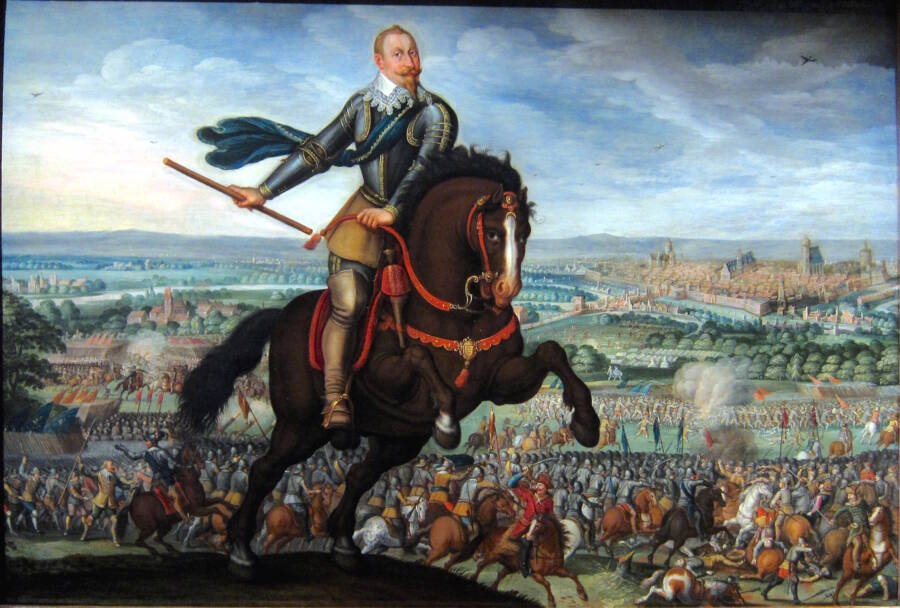
Public DomainGustavus Adolphus of Sweden, known as the “Lion of the North,” at the Battle of Breitenfeld in 1631 in the midst of the Thirty Years’ War.
In the broader context, the Thirty Years’ War resulted in a significant population decline across Germany, with some regions losing up to 30 percent of their inhabitants. According to Dräger, “Eisleben lost around half of its population between 1628 and 1650. [It was] a picture of constant war horror.”
The war’s end in 1648 with the Peace of Westphalia brought some relief, but the recovery for towns like Eisleben was slow, and some took decades to rebuild their economies and populations. With all of this taken into consideration, Dräger said that the loss of this coin hoard was likely a tragedy at the time.
“This makes the find a highly significant historical and real testimony, not only for Eisleben, but also for the history of the state of Saxony-Anhalt in the heart of Europe,” he said.
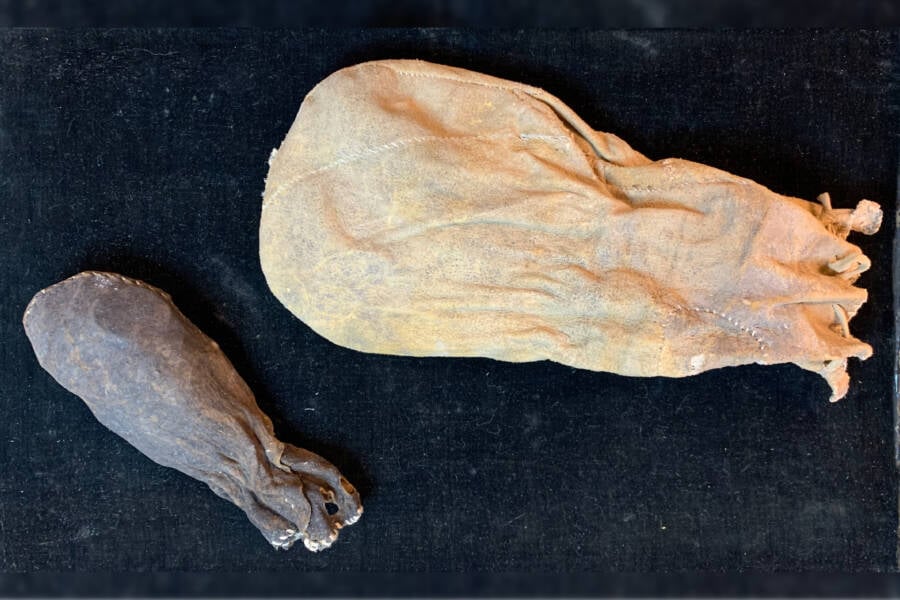
U. Dräger, HalleThe leather pouches found in the statue that contained hundreds of coins.
Experts believe this hoard was, in fact, a church fund meant to cover pensions and medical expenses for priests and theologians in Eisleben. The fund was established in 1561, and it’s likely that someone at the time wanted to ensure that the church funds — which were not, as Dräger explained, “charitable donations,” but rather “income obtained from the special services of the priests” — were secured.
For now, however, experts are planning to conduct another detailed examination of each coin at Moritzburg Art Museum in Halle, with additional plans to ultimately display the results at St. Andreas Church.
After reading about the discovery of this 17th-century coin hoard, learn about how the defenestration of Prague helped to spark the Thirty Years’ War. Then, learn all about history’s most devastating civil wars.





